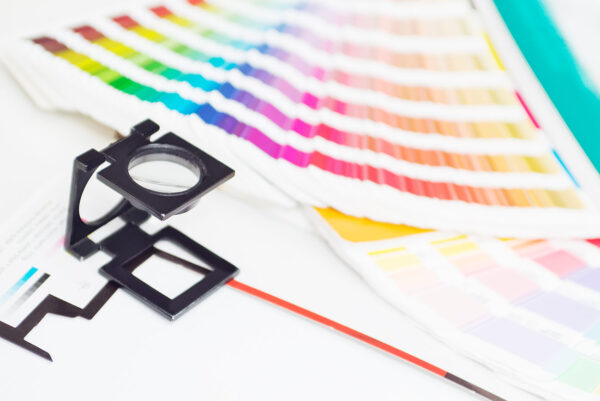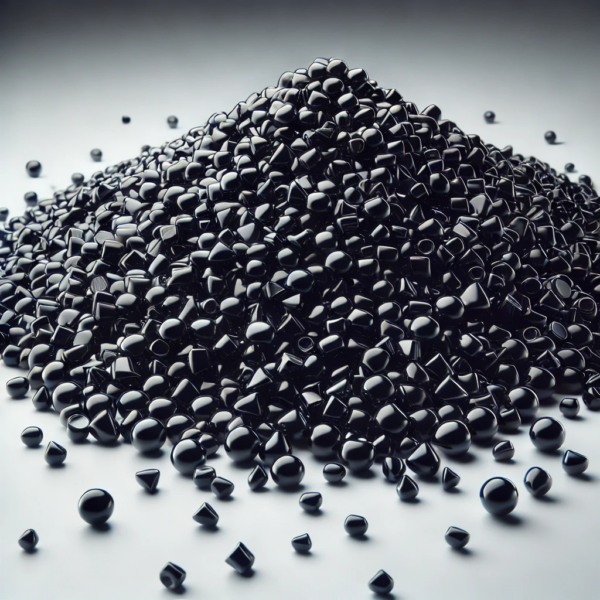Setting the Tone with Functional Pigments

Improvements in functionality, aesthetics, and sustainability are essential for pigments, as user experience emphasizes the importance of ensuring color.
In plastic products, color is crucial in establishing identity and enhancing user experience. Consequently, pigment aesthetics and sustainability improvements have become essential. As consumer expectations rise, the demand for vibrant, durable, and eco-friendly pigments drives innovation, ensuring that color captivates and aligns with sustainability goals.
You can also read: Is Color Affecting Plastic Recycling?
“As we see a greater focus on sustainable materials, there will be more developments in the realm of functional pigments,” said Jeff Drusda, innovation consultant at the Chemours Company in Wilmington, Del.
“For example, having colors that reflect ultraviolet and infrared light supports the United Nations’ Sustainable Development Goals by reducing cooling costs, lowering carbon footprint, and providing longevity to exterior materials. Additionally, colors that offer similar benefits to select additives help achieve economic benefits for performance and integrity by reducing the need for said additives.”
Importance of Color Matching

Accurate color matching in packaging is essential for effective marketing, strengthening brand loyalty, and boosting sales.
Color matching in packaging is essential for maintaining brand consistency and ensuring consumer recognition. Accurate color matching helps convey the brand’s identity, enhances visual appeal, and influences purchasing decisions. Inconsistent colors can lead to a perception of poor quality and can confuse consumers. Therefore, precise color matching in packaging plays a vital role in marketing, reinforcing brand loyalty, and driving sales.
“Color and design in packaging is being challenged by the increase of e-commerce,” Iannuzzi said. “Since most of the products are being purchased through internet sales, the product you order online doesn’t usually match the color that arrives at your door.” This will require closer collaboration between product designers and converters to ensure, as much as possible, consistency of colors from the manufacturing stage to receipt at customers’ homes.
Iannuzzi illustrated the balance between a circular economy, brand recognition, and customer desires by discussing the case of the classic Coke bottle. In January, Coca-Cola indicated it would not stop selling single-use plastic bottles out of fear of alienating brand-loyal customers who enjoy the light weight and ability to reseal the bottles, according to Bea Perez, head of sustainability, who spoke to the BBC. To counter concerns about plastics reuse, the soft drink giant has been experimenting with a fully recyclable bottle of which 25 percent is marine plastics.
The Undertone of Carbon Black
In the never-ending quest to improve the appearance of black components, Curtis Ross, technical service manager for Toronto-based DCCL Corp., explained explained some characteristics of pigments. He said that colored pigments can be used to improve “jetness, blackness, and the undertone of carbon black.”
In particular, he demonstrated that blue pigments like:
- Pigment Blue (PB) 60 (indanthrone blue) and PB 15.3 (phthalocyanine blue) “provide the most economic impact,” given the low concentrations required to achieve the desired effect.
- PB.60’s improvement of jetness leveled off as loading increased.
- PG.7 (phthalocyanine green) also improved jetness, but at a higher—and therefore less economically friendly—pigment loading.
- Warmer colors like PR.179 (perylene red) and PV.29 (perylene violet) worsened the effects of carbon black.
- PV.29 produced a brown tone in terms of jetness. Also a redder shade of black undertone, and a very red/purple hue.
- Pigment Violet 23, but it can degrade at higher temperatures, especially when tinted.
You can also read: Color Coordinates
Jetness Awareness

Carbon black is added to plastics to impart a black color, a quality known as “jetness.”
Carbon black is added to plastics to impart a black color, a quality known as “jetness.” Higher jetness levels make the color appear blacker compared to those with lower jet characteristics. Jetness depends on surface area, primary particle size, and degree of dispersion. Carbon blacks with smaller primary particle sizes typically provide higher jetness than those with larger particles.
To examine jetness, Ross and his team used a Carbon Black 7 with particle size of 75 nanometers to “see the impact of jetness more clearly when adding the colored pigments. A particle size of less than 20 nanometers will provide excellent jetness.” The team used blends comprising 10 percent carbon black and 10 percent masterbatches of each secondary color. For each dispersion on a two-roll mill, 7 grams (0.7 percent) of the 10 percent carbon black masterbatch was determined to be the optimum loading. Secondary colors were added at loads of 0.2 percent, 0.4 percent, 0.6 percent, 0.8 percent, and 1.0 percent.
While there are many options for carbon black—some of which have very small particle sizes for superior jetness—“some manufacturers do not have the proper dispersing equipment to achieve full color development,” Ross said.
By “using a black with a slightly larger particle size with limited jetness, they can achieve full dispersion and at the same time increase jetness through color blending. In addition, a sharp blue undertone can be achieved, which is often preferred within the electronics and automotive industries,” he explains.
Future research will test two inorganic pigments, PB 28 (cobalt blue) and PB 29 (ultramarine blue).
Loving Liquid Color

Polymeric dispersants and functional carrier fluids work synergistically to ensure consistent color.
Liquid colorants usually enable higher pigment loadings compared to typical concentrates, reducing the amount of color needed. Consequently, this lowers color costs for the manufacturer. They are expected to continue to grow thanks to some advantages over pellets. Nathan Noyes, Sales Development Specialist at Croda Inc. in Edison, N.J., showcased the company’s advances in using carrier fluids and dispersants to push the boundaries of 100 percent biobased materials.
“Our polymeric dispersants and functional carrier fluids work synergistically to ensure consistent color, pumpability, and plastic compatibility of high solids concentrates, along with positive impacts on sustainability for the convertor and end-user,” Noyes explained.
“These benefits include those associated with the carbon footprint of the materials themselves. But also by reducing energy consumption during concentrate production. Moreover, included a reduction in waste commonly associated with the limited shelf-life of concentrates or inconsistent processing or color development.” Noyes said. Croda’s nearly universal dispersants now include a fully bio-based grade. Zephrym PD 2206, which delivers the characteristic pigment dispersion, particle size reduction, and stability of traditional dispersants.
Compatible Concentrates
Noyes also demonstrated how understanding particle surface and solubility characteristics helps fine-tune combinations of functional carrier fluids and surfactants. Consequently, this knowledge creates broadly compatible concentrates. Moreover, Noyes showed that PEG-20 sorbitan trioleate (Span 85) works synergistically with Zephrym polymeric dispersants. It delivers about twice the color, such as titanium oxide, into plastic compared to a mineral oil carrier. As a result, this reduces the amount of inert carrier material needed.
When selecting dispersants he emphasized some important aspects. For example, matching the anchoring head group of the dispersant with the surface character of the particle. This ensures optimal absorption by the particle surface. Additionally, Noyes cautioned that balancing a dispersant’s solubility in the carrier is crucial. You must fully extend the stabilizing chains, but ensure the dispersant-solvent interaction is not stronger than the dispersant-particle interaction.
You can also read: The Holistic Approach to Requalifying a Resin
Polymeric Dispersants
Noyes concluded that today’s advanced liquid color components significantly contribute to sustainability by reducing energy use. Additionally, they minimize waste through longer shelf life, making them highly effective for sustainable practices. Additionally, Croda’s biobased materials enhance safety by eliminating extractables and volatile organic compounds. “We will continue to partner with concentrate producers to understand their pain points. We would also have the flexibility to develop and introduce biobased dispersants as needed.”
You can also read: Nanoparticle Paint Has Potential to Save Weight, Money
Wax Enhances Masterbatches
Waxes, particularly Fischer-Tropsch (FT) waxes, have been used to optimize masterbatch dispersions—primarily black—for more than 40 years. Philip Richards, PhD, manager of wax and IPC for Sasol, which is based in South Africa, compared color performance using the company’s EnHance synthetic FT Wax.


Richards noted that FT waxes, compared to polyethylene waxes with high melting curves, are narrower and available in various melting grades. Additionally, he highlighted that Sasol’s FT wax features low impurities, no sulfur, high linearity, and low viscosity. Furthermore, he mentioned that FT wax has very low surface energies, thermal stability, and excellent lubricant properties.
“The low viscosity of FT wax aids in wetting the pigment particles, facilitating agglomerate breakdown and preventing re-agglomeration,” he explained. “The lower viscosity also makes processing easier. With lower energy input requirements and the potential to add more pigment or filler.”
Dispersion in White Masterbatches
Richards studied wax dispersion using three white masterbatches containing 60 percent, 75 percent, and 85 percent titanium dioxide (TiO2). Also a yellow masterbatch; and a red masterbatch. Results included:
- At 60 percent TiO2, FT wax improved pigment dispersion with low energy input.
- At 75 percent TiO2, wax improves downstream parameters including reduced melt pressure, increased flow rate, and improved mold release.
- At 85 percent TiO2, only FT wax performed well vis-à-vis PE wax.
- With the yellow pigment, two formulations containing FT wax were scaled up. They used 500-kg (1,100-lb) quantities in the injection molding of 15,000 parts. With the masterbatch performing similarly to the original formulation that used high-quality PE wax.
Test Results
With the red pigment, on optimizing the loading, the FT wax could assist with reducing the energy requirement.
“Our test results indicate that the high-quality PE wax and the FT waxes provide a similar reduction in extruder amps in the typical color masterbatches that were studied”. Said Richards , “Color strength measurements were also similar. They did not attempt to optimize, so the low viscosity might allow for lower wax loadings. FT wax could be a drop-in replacement for polyethylene wax. For example, when the wax content in the masterbatch formulation is relatively low. In other cases, it may be necessary to add less wax to avoid over-lubrication.”
In addition to improving molding outcomes, FT waxes could also assist in blown film processing.
Originally published as Setting the Tone by Geoff Giordano in Plastics Engineering Magazine issue Nov-Dec 2020. Edited for online by Juliana Montoya.
